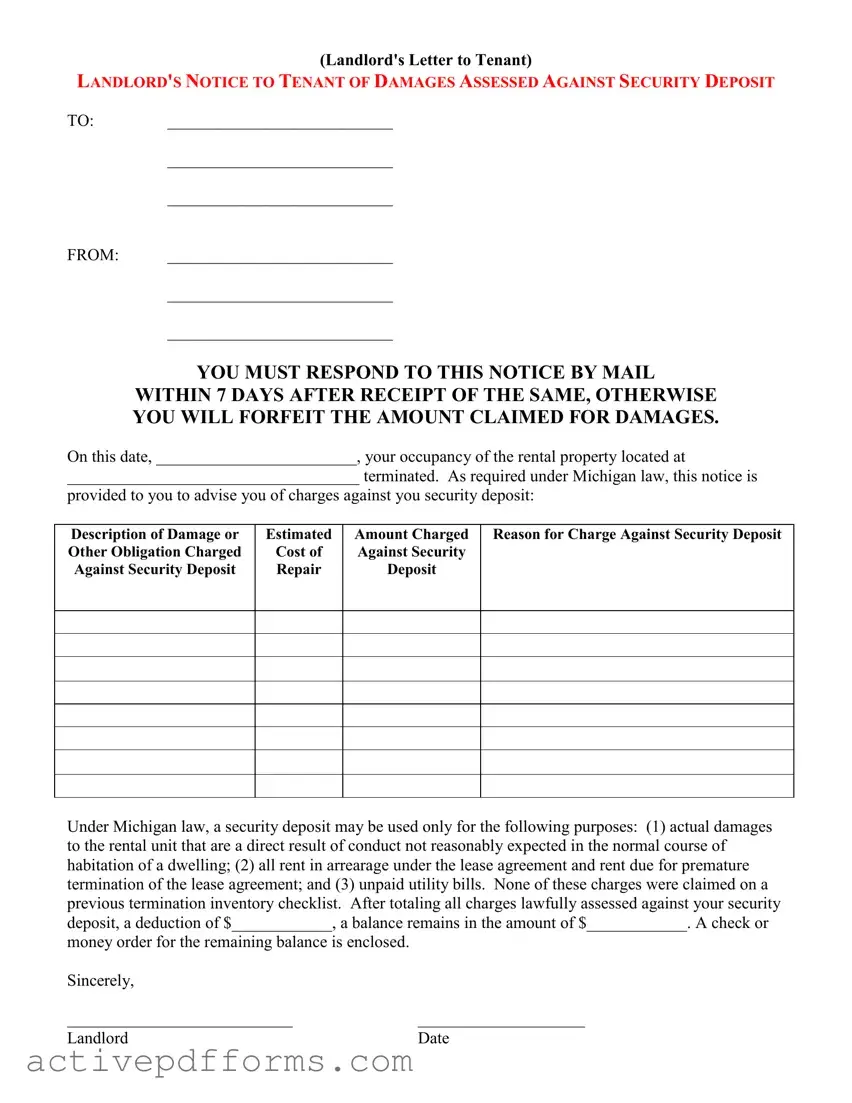(Landlord's Letter to Tenant)
LANDLORD'S NOTICE TO TENANT OF DAMAGES ASSESSED AGAINST SECURITY DEPOSIT
TO: ___________________________
___________________________
___________________________
FROM: ___________________________
___________________________
___________________________
YOU MUST RESPOND TO THIS NOTICE BY MAIL
WITHIN 7 DAYS AFTER RECEIPT OF THE SAME, OTHERWISE YOU WILL FORFEIT THE AMOUNT CLAIMED FOR DAMAGES.
On this date, ________________________, your occupancy of the rental property located at
___________________________________ terminated. As required under Michigan law, this notice is
provided to you to advise you of charges against you security deposit:
Description of Damage or |
Estimated |
Amount Charged |
Reason for Charge Against Security Deposit |
Other Obligation Charged |
Cost of |
Against Security |
|
Against Security Deposit |
Repair |
Deposit |
|
|
|
|
|
|
|
|
|
|
|
|
|
|
|
|
|
|
|
|
|
|
|
|
|
|
|
|
|
|
|
|
|
|
|
|
|
Under Michigan law, a security deposit may be used only for the following purposes: (1) actual damages to the rental unit that are a direct result of conduct not reasonably expected in the normal course of habitation of a dwelling; (2) all rent in arrearage under the lease agreement and rent due for premature termination of the lease agreement; and (3) unpaid utility bills. None of these charges were claimed on a previous termination inventory checklist. After totaling all charges lawfully assessed against your security deposit, a deduction of $____________, a balance remains in the amount of $____________. A check or
money order for the remaining balance is enclosed.
Sincerely, |
|
___________________________ |
____________________ |
Landlord |
Date |

